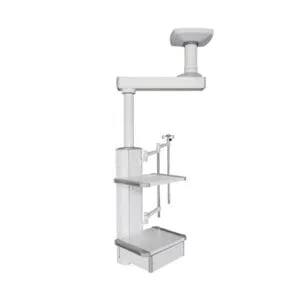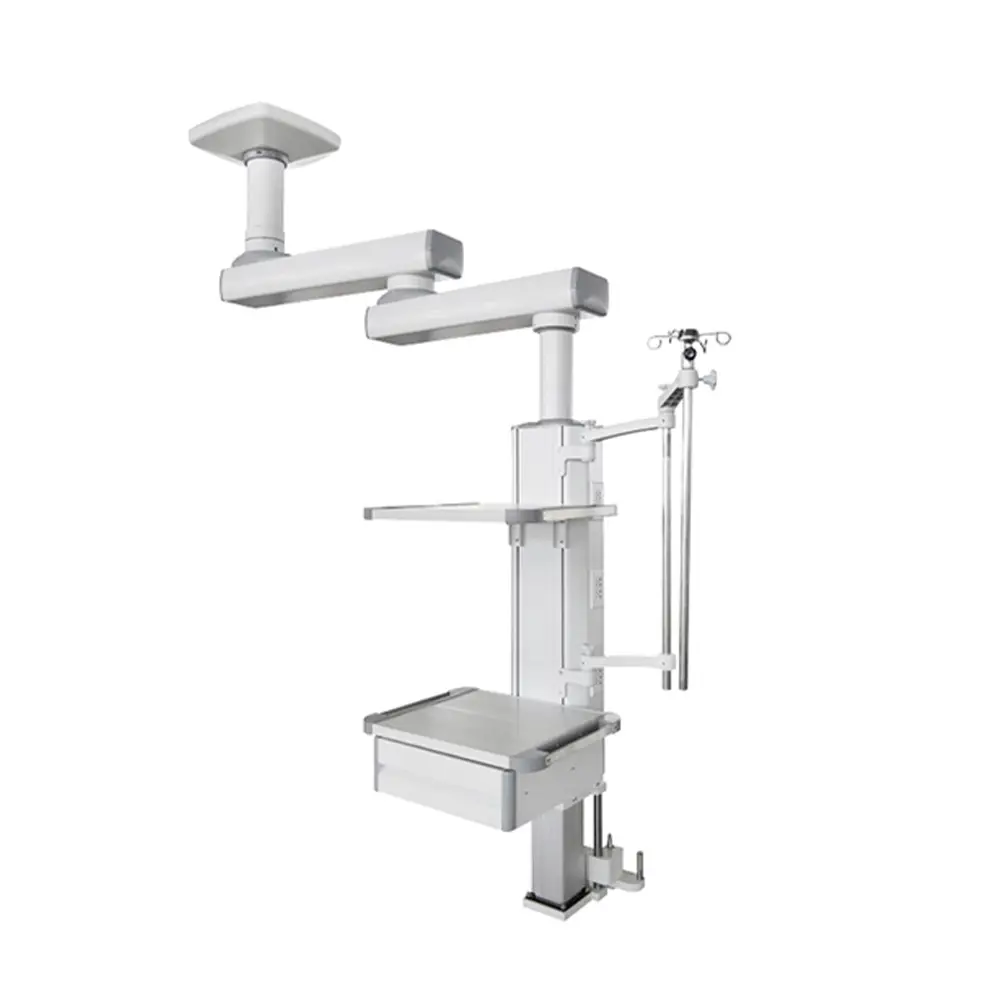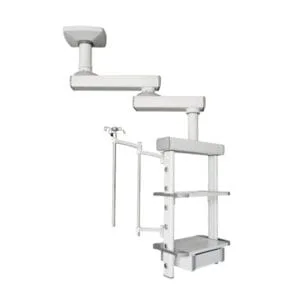Endereço
304 North Cardinal St.
Dorchester Center, MA 02124
Horas de trabalho
Segunda a sexta: 7h00 - 19h00
Fim de semana: 10h - 17h
Bem-vindo ao meu blog!
Antes de mergulharmos no conteúdo, se você estiver interessado em nossos produtos ou tiver alguma dúvida, sinta-se à vontade para visitar nosso Contate-nos página do site. Nossa equipe está pronta para ajudar você com dúvidas, pedidos ou qualquer suporte que você precisar.
Agora, vamos começar nossa jornada juntos. Espero que você ache o conteúdo aqui esclarecedor, envolvente e valioso.

Surgical pendants are a critical part of modern operating rooms, designed to streamline the surgical environment by offering a well-organized, flexible support system for medical equipment. These versatile devices are equipped to manage electrical connections, medical gases, and surgical tools, all while enhancing safety and improving workflow. As operating rooms continue to evolve, surgical pendants have become a staple of healthcare infrastructure, offering both practical and ergonomic benefits for surgical teams. In this comprehensive guide, we will explore everything you need to know about surgical pendants— from their features and benefits to installation and maintenance tips, so that you can make an informed decision when selecting the right pendant for your medical facility.
Surgical pendants are specialized ceiling-mounted systems that support vital medical equipment in the operating room. They are designed to hold surgical tools, lighting, monitors, and provide connections to electrical and gas supply systems, all within easy reach of the surgical team.
These systems typically feature a central column that connects to the ceiling, with arms that extend outward to hold the medical equipment. The pendants offer a range of functions:
This system ensures that all vital equipment is within reach but out of the way, keeping the operating room floor clear and reducing the risk of tripping or equipment interference during procedures.
When selecting a surgical pendant, understanding the key features is crucial to choosing the right one for your needs. Surgical pendants come in different sizes, capacities, and designs. Here are some essential features to consider:
An ergonomic design is essential for maximizing comfort and minimizing strain on the medical team during long surgeries. Pendants that allow for optimal height adjustment, flexible arm positions, and easy access to equipment can significantly improve the comfort of surgeons and operating room staff.
Pendants should offer easy height adjustment to accommodate surgeons of different heights and operating room configurations. The ability to extend and retract the pendant’s arms helps the surgical team to keep the workspace organized and clutter-free, especially in complex surgeries.

Surgical pendants are no longer just tools for holding medical equipment; they have become integral to the efficient functioning of an operating room. Here’s how they contribute to modern surgical environments:
Surgical pendants contribute not only to the physical organization of the room but also to the psychological comfort of the surgical team, allowing them to focus on their task without distractions or unnecessary movements.
Surgical workflow is a critical factor in the success of an operation, and surgical pendants have a significant impact on this. Here are some of the ways they enhance workflow:
The ability to have all necessary equipment within arm’s reach during surgeries reduces downtime between operations. Having an organized and accessible setup not only speeds up procedures but also ensures a quicker turnaround, improving overall operational efficiency in the hospital.
Proper installation of a surgical pendant is key to ensuring that it functions optimally and safely. Here’s a basic step-by-step guide:
Regular checks and maintenance after installation are crucial to ensure that the pendant continues to perform at its best.

Modern surgeries require the highest levels of precision, and surgical pendants provide features that support advanced surgical techniques:
These advanced features help ensure that surgeries are performed efficiently and safely.
When choosing between surgical pendants and traditional ceiling-mounted systems, it’s important to consider factors such as flexibility, cost, and functionality:
While ceiling-mounted systems have their advantages, such as stability, pendants offer greater flexibility, which is a crucial consideration for modern operating rooms.
Surgical pendants represent a significant investment, but they are well worth the cost for hospitals and clinics looking to modernize their operating rooms. Key factors that contribute to the cost include:
Though the initial investment might be high, the long-term benefits include reduced operational costs, less maintenance, and improved surgical outcomes. These benefits ultimately justify the upfront expense.
In emergency surgeries, efficiency is critical. Surgical pendants provide several advantages in these high-pressure situations:
The faster and more organized an emergency procedure can be, the better the patient outcomes will be, and surgical pendants play a key role in this efficiency.

To ensure that your surgical pendant continues to function optimally, here are a few maintenance tips:
Maintaining the pendant’s mechanical components, especially the moving arms and joints, ensures smooth and precise adjustments during surgeries, improving both functionality and longevity.
Surgical pendants are indispensable tools in modern operating rooms, offering increased efficiency, safety, and versatility. Their ability to organize and manage equipment and supplies while saving space makes them essential in today’s fast-paced surgical environment. By understanding their key features and benefits, hospitals can make more informed decisions, selecting pendants that align with their operational needs. Investing in high-quality surgical pendants not only improves the operating room setup but also contributes to better patient care and outcomes.
Can surgical pendants be used in all types of surgeries?
Yes, surgical pendants are versatile and can be used for a wide range of surgeries, including emergency, robotic, and minimally invasive procedures.
São surgical pendants compatible with all types of medical equipment?
Surgical pendants are generally compatible with most standard medical equipment. However, it’s important to verify compatibility with specific devices like monitors, lights, and anesthesia machines before installation. Some pendants also offer customization options to accommodate unique equipment.
Can surgical pendants be customized for specific needs or surgical procedures?
Yes, many modern surgical pendants offer customization options. You can modify the pendant to fit your specific needs, such as adding extra arms for equipment or integrating advanced systems like video monitors or robotic surgical tools.
Notificações
